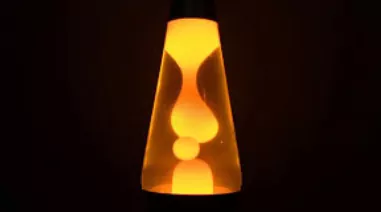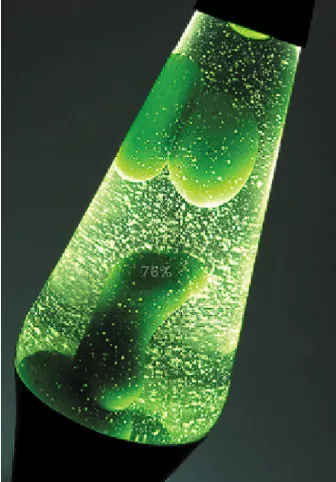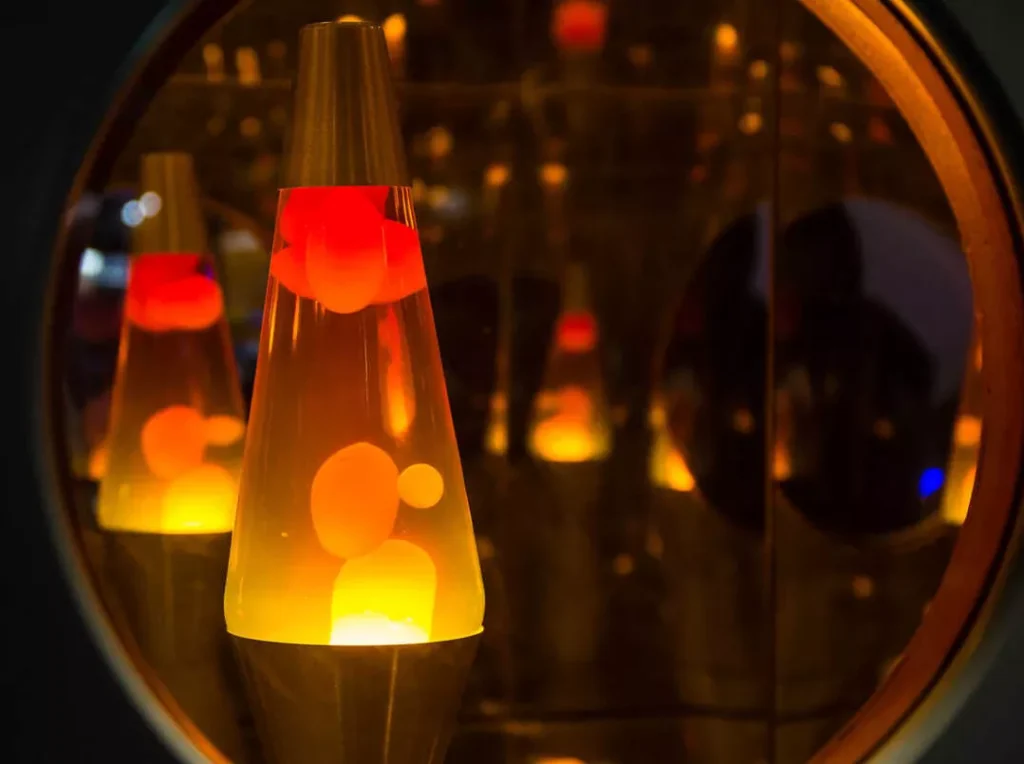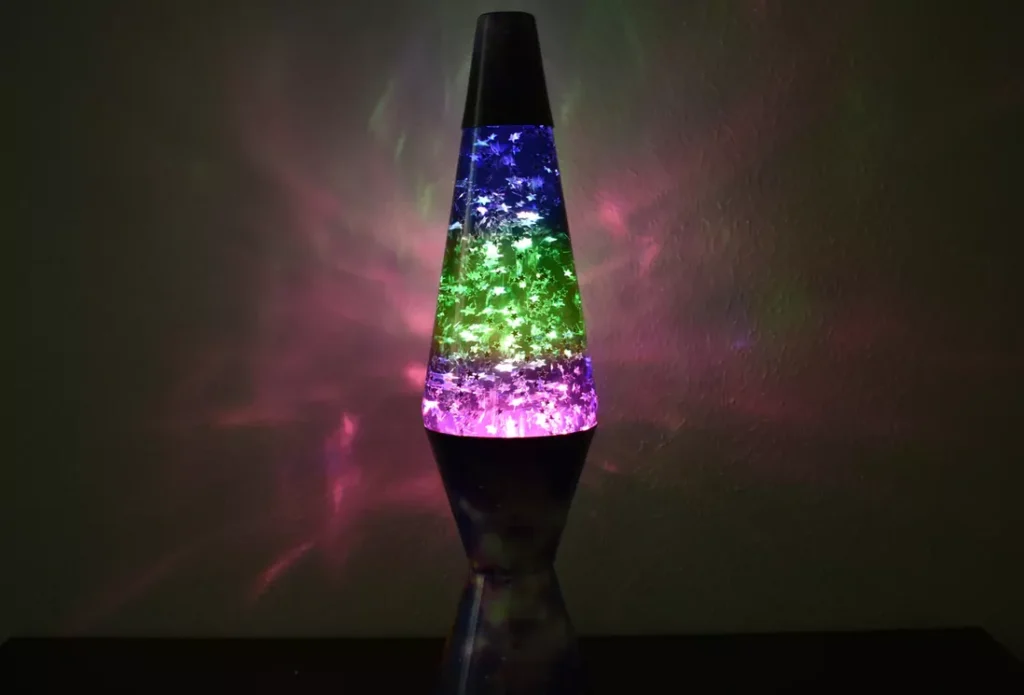A lava lamp works based on principles of thermodynamics and fluid dynamics.
Here’s a basic explanation of how a lava lamp operates:

lava Lamp Structure:
A lava lamp typically consists of a transparent glass or plastic container filled with a special liquid and a wax or oil-based substance.
The container is placed on top of a heating element, usually a light bulb.

Lava lamp s Liquid:
The liquid inside the lamp usually consists of a combination of wax and a mineral oil or similar substance.
At room temperature, this mixture is in a solid state, resembling the appearance of lava when it’s cold.
Heating Element:
The heating element, usually a light bulb, is located at the bottom of the lamp.
The bulb emits heat, which warms the liquid in the bottom of the lamp.

Heating and Rising of lava lamp:
As the heating element warms the bottom of the lamp, the solid wax in the liquid begins to melt and turn into a liquid state.
The heated liquid becomes less dense than the surrounding cool liquid, causing it to rise towards the top of the lamp.

Cooling and Falling:
As the liquid reaches the cooler upper part of the lamp, it begins to cool down.
The cooled liquid becomes denser and starts to sink back down to the bottom of the lamp.

In a word:
This rising and falling motion creates a continuous cycle, resulting in the characteristic lava lamp flow.
The cycle repeats as long as the lamp is turned on and the heating element continues to provide the necessary heat.
The interaction between the rising and falling blobs of wax in the colored liquid produces the mesmerizing visual effect that is a hallmark of lava lamps.
The constantly changing shapes and patterns provide a unique and decorative lighting experience.
you may also like:
Do you know someting about lamp?
How to identify the quality of crystal lamp?
why Spencer’s lava lamps such good?
how to diy a lava lamp im very simple way?
Revealed: The principle behind a lava lamp!
5 Tips :How to Choosing the Right Light Bulb for Your Lava Lamp!
